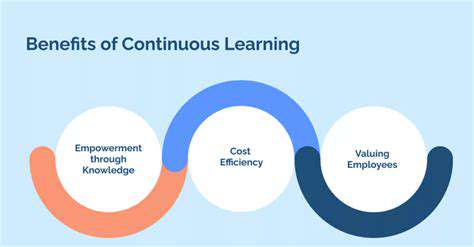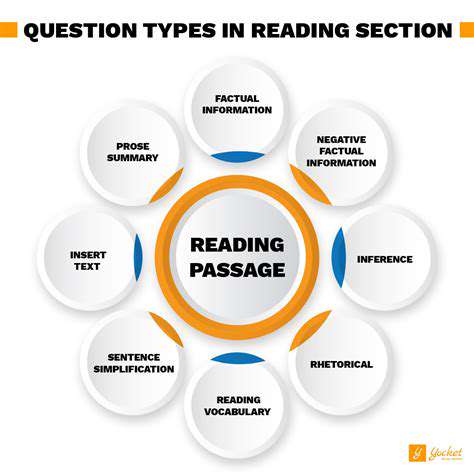How to Build a Strong Brand for Your Business

Defining Your Brand's Core Values
Understanding your brand's core values is paramount to establishing a strong and consistent identity. These values are the guiding principles that underpin every aspect of your brand, from your messaging and design to your customer service and overall operations. Articulating these values clearly allows you to connect with your target audience on a deeper level, fostering trust and loyalty. Values like honesty, innovation, sustainability, or customer focus can significantly shape your brand's perception and resonate with consumers who share similar ideals.
Clearly defining your core values will provide a framework for all future decisions, ensuring that your actions align with your brand's essence. This alignment will ultimately lead to a more authentic and recognizable brand presence.
Understanding Your Target Audience
A deep understanding of your target audience is crucial for effectively communicating your brand's essence. This involves identifying their needs, desires, motivations, and pain points. Researching their online behavior, preferences, and demographics provides invaluable insight into how to craft compelling messaging that truly resonates with them. By tailoring your brand's message to their specific concerns and aspirations, you can build stronger connections and foster loyalty.
Crafting a Compelling Brand Story
A compelling brand story is more than just a narrative; it's a powerful tool for connecting with your audience on an emotional level. It should encapsulate your brand's history, mission, and values, highlighting the unique experiences and values that set you apart. This story should be authentic and relatable, showcasing the human element behind your brand.
Sharing your brand's journey and the motivations behind your creation fosters trust and allows consumers to connect with the people and values behind the brand. This emotional connection is key to building brand loyalty and advocacy.
Visual Identity: Design and Aesthetics
Your brand's visual identity plays a crucial role in conveying your brand's essence. This encompasses your logo, color palette, typography, imagery, and overall design aesthetic. Careful consideration of these elements ensures consistency across all platforms and creates a cohesive brand experience for your audience. Consistent visual elements reinforce your brand identity, making it instantly recognizable and memorable. A well-designed visual identity helps create a strong first impression and leaves a lasting impression on potential customers.
Brand Voice and Messaging
Your brand's voice and messaging are essential for communicating your brand's essence effectively. This encompasses the tone, style, and language you use in all your communication channels. A consistent brand voice helps establish a unique personality and builds recognition. Whether formal, informal, playful, or professional, your voice should align with your brand's overall identity and values. A clear and consistent voice makes your brand easily identifiable and strengthens its connection with the target audience.
Brand Experience and Customer Service
The brand experience encompasses all customer interactions, from initial contact to ongoing support. Positive interactions with your brand foster loyalty and encourage repeat business. Providing exceptional customer service is key to building a strong reputation and a positive brand image. Excellent customer service is a reflection of your brand's values and commitment to customer satisfaction, ultimately impacting brand loyalty and advocacy. By consistently exceeding customer expectations, you create a memorable and positive experience, strengthening your brand's essence.
Monitoring and Adapting Your Brand
Once your brand's essence is defined, it's crucial to monitor its effectiveness and adapt as needed. Market trends, customer feedback, and competitor analysis provide valuable insights into how to maintain relevance and appeal. Adapting to evolving market demands and customer preferences is essential for maintaining a strong and vibrant brand. Regularly evaluating your brand's performance ensures that it remains aligned with your goals and resonates with your target audience.
Building a Visual Identity: Logo, Colors, and Typography

Logo Design Principles
A strong logo is more than just a pretty picture; it's a visual representation of your brand's essence. Careful consideration of design elements like shape, color, and typography is crucial to conveying the right message. A well-designed logo will resonate with your target audience, creating a lasting impression and fostering brand recognition. This involves understanding the brand's personality and values, and translating those into a visual language that's both memorable and impactful. Careful research into existing logos and competitor analysis can help identify opportunities for differentiation and ensure your logo stands out from the crowd.
Elements like font choice, color palette, and imagery contribute significantly to the overall aesthetic and messaging of the logo. The specific combination of these components should effectively communicate the brand's core values and mission. Consider the emotional response you want to evoke in your audience. A modern, minimalist design might suggest innovation, while a more traditional approach could convey trustworthiness and reliability. Understanding these principles ensures your logo aligns seamlessly with your brand's identity and effectively communicates its core message.
Logo Application and Brand Consistency
A fantastic logo is only the starting point. Its successful implementation across various platforms is equally critical for building a strong visual identity. This includes using the logo in different sizes, formats, and contexts, ensuring maintainability and scalability. From your website and social media profiles to printed marketing materials and product packaging, consistency is key. Adhering to specific guidelines for logo usage (e.g., minimum size requirements, color variations, and placement) ensures a unified brand experience across all touchpoints.
Maintaining consistency in the use of your logo across all platforms is essential for brand recognition and recall. This includes utilizing the same logo style, colors, and typography across marketing materials, website design, and social media posts. This uniformity reinforces brand identity and builds trust with consumers. Ensuring your logo is properly displayed in various circumstances, from small icons to large banners, is vital for maintaining a coherent and professional brand image.
Beyond visual consistency, consider the overall brand experience. A unified look and feel across all touchpoints, including messaging and tone, creates a cohesive brand identity. Consider the emotional connection you want to evoke. These factors, when effectively combined, create a memorable and impactful brand experience.
Creating a Brand Experience That Resonates With Customers
Understanding Your Target Audience
A crucial first step in crafting a resonant brand experience is a deep understanding of your target audience. This involves more than just demographics; it's about uncovering their motivations, pain points, aspirations, and values. What are their daily struggles? What are their dreams? What language do they use? By truly connecting with your target audience on an emotional level, you can tailor your brand experience to speak directly to their needs and desires, fostering a deeper connection.
Defining Your Brand Identity
A strong brand identity is the cornerstone of any successful brand experience. This encompasses your brand's values, mission, vision, and personality. What makes your brand unique? What are its core principles? Defining these elements clearly allows you to infuse every aspect of your brand experience with consistency and authenticity, ensuring that your customers perceive a cohesive and trustworthy image.
Articulating your brand's voice and tone is also vital. Is it playful and approachable, or sophisticated and authoritative? This linguistic style should be reflected in all your brand communications, from website copy to social media posts, ensuring that your message resonates effectively with your intended audience.
Designing an Engaging Visual Identity
Visual elements play a significant role in creating a memorable brand experience. This includes your logo, color palette, typography, and overall aesthetic. A consistent visual identity reinforces brand recognition and helps create a cohesive and recognizable experience across all platforms. Visually appealing design elements, combined with meticulous attention to detail, can leave a lasting impression on your target audience.
Creating Seamless Customer Journeys
A positive brand experience is not a one-off event but a series of interactions that create a seamless customer journey. From initial awareness to purchase and beyond, every touchpoint should contribute to a positive and memorable experience. Consider every stage of the customer journey, from browsing your website to interacting with customer service representatives. Ensure each interaction aligns with your brand identity and provides a consistent level of quality and value.
Leveraging Technology for Enhanced Engagement
Technology is a powerful tool for enhancing brand engagement. Utilize social media platforms, email marketing, and other digital channels to connect with your target audience. Interactive content, personalized recommendations, and targeted advertising can significantly boost customer engagement and loyalty. Integrating technology effectively can create a more personalized and engaging brand experience.
Measuring and Adapting Your Approach
Monitoring the effectiveness of your brand experience is crucial for continuous improvement. Track key metrics such as customer satisfaction, engagement rates, and conversion rates. Analyze the data to identify areas where your brand experience can be enhanced or adjusted. By actively monitoring and adapting your approach, you can ensure that your brand experience consistently resonates with your customers and keeps pace with evolving market trends.
Read more about How to Build a Strong Brand for Your Business
Hot Recommendations
- How to Stay Productive While Working Remotely
- Tips for Managing Conflict with Coworkers
- Entrance & Certification Exams (升学考试)
- How to Improve Your Storytelling Skills (Speaking)
- How to Find Profitable Side Hustles
- Tips for Preparing for the TOEFL iBT Home Edition
- Guide to Switching Careers from [Industry A] to [Industry B]
- How to Run an Effective Hybrid Meeting
- Tips for Marketing Your Side Hustle on Instagram



![How to Improve Your Memory and Retention [Techniques]](/static/images/32/2025-05/OptimizingYourLearningEnvironment3ASettingtheStageforSuccess.jpg)



![Guide to Applying for University Scholarships [Worldwide]](/static/images/32/2025-06/DemonstratingFinancialNeed28ifapplicable293ADocumentingYourSituation.jpg)


